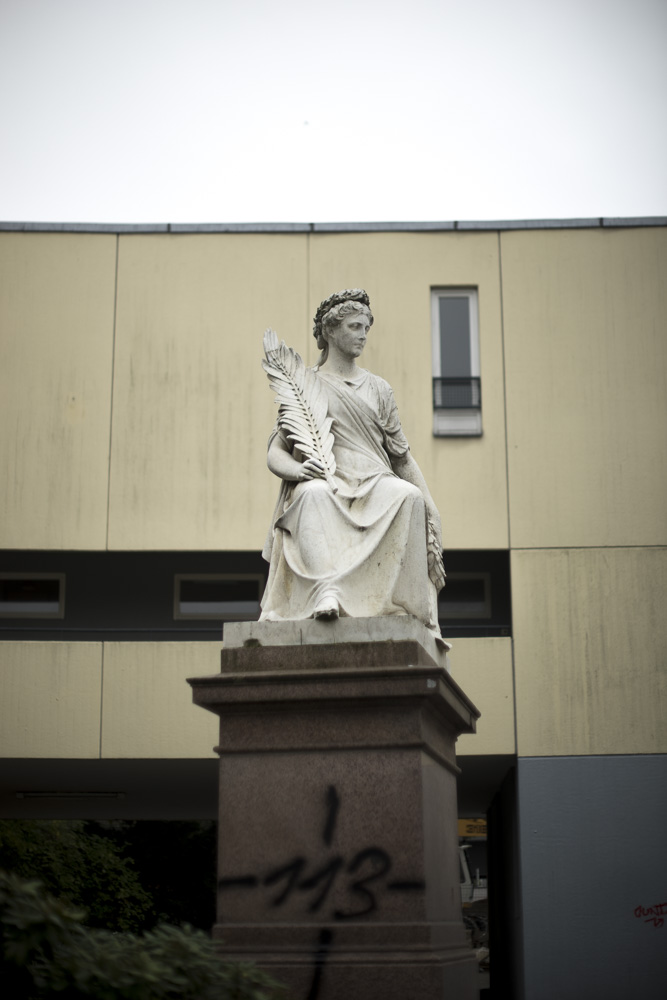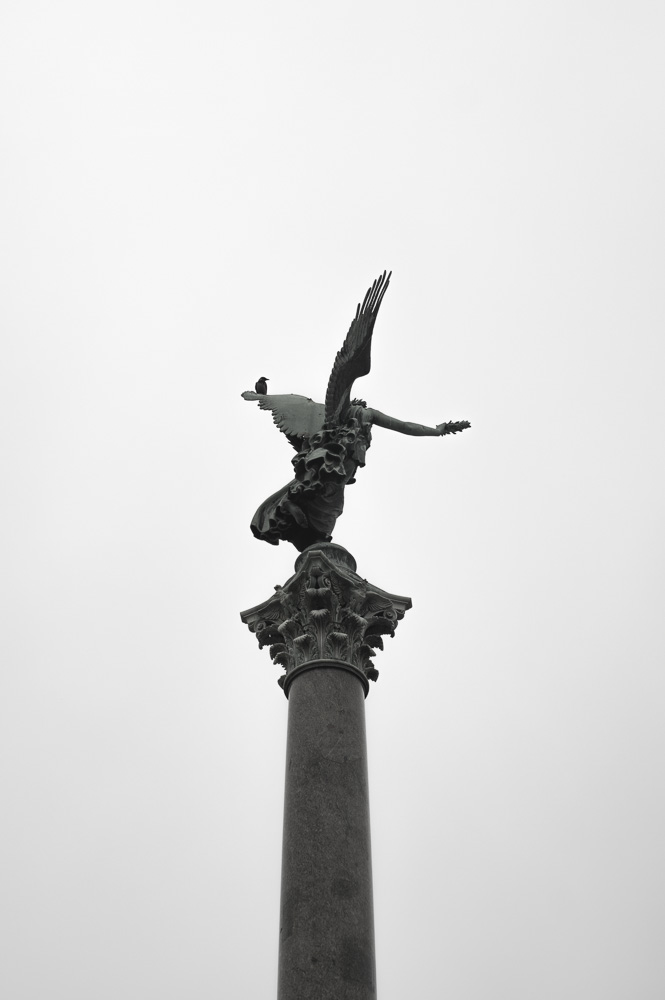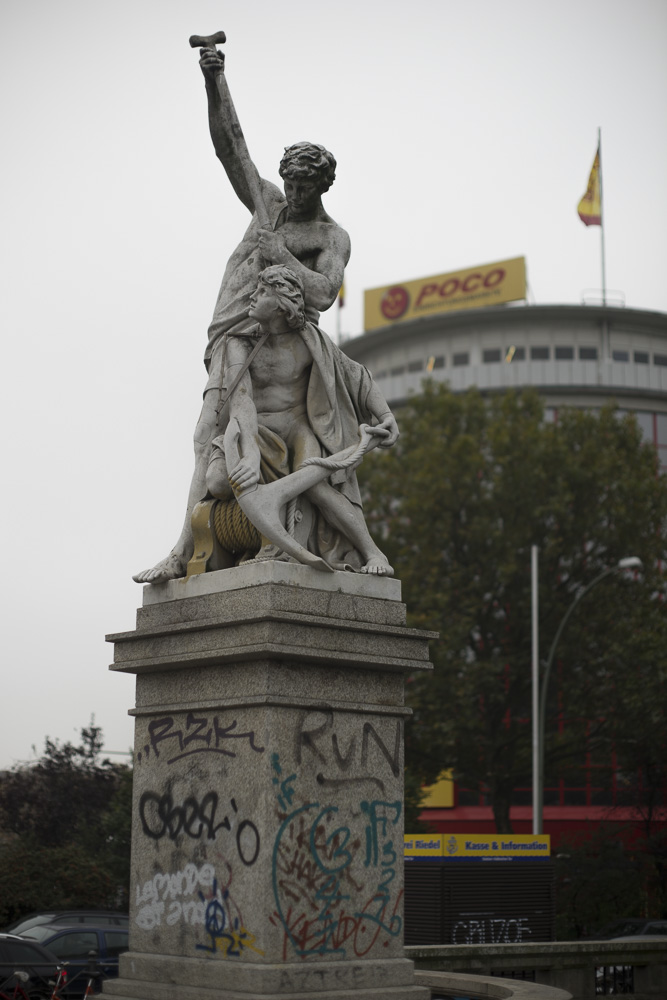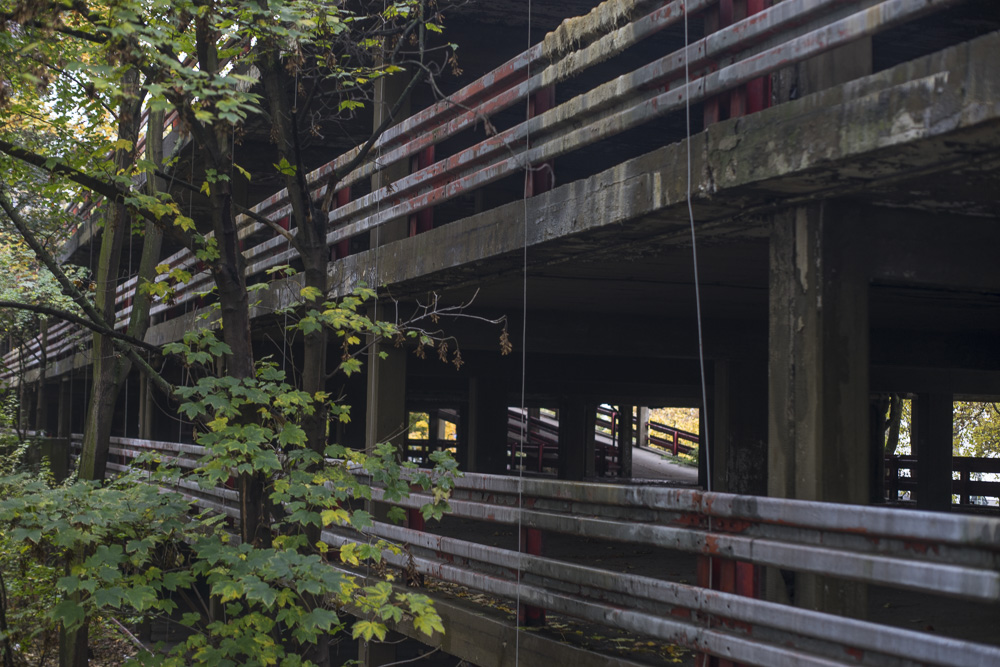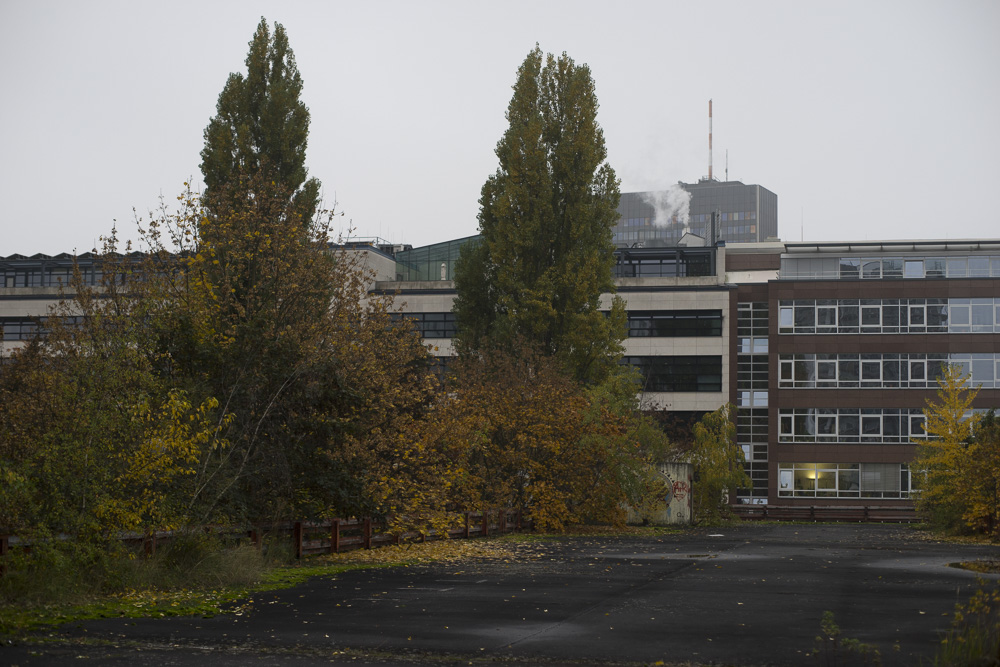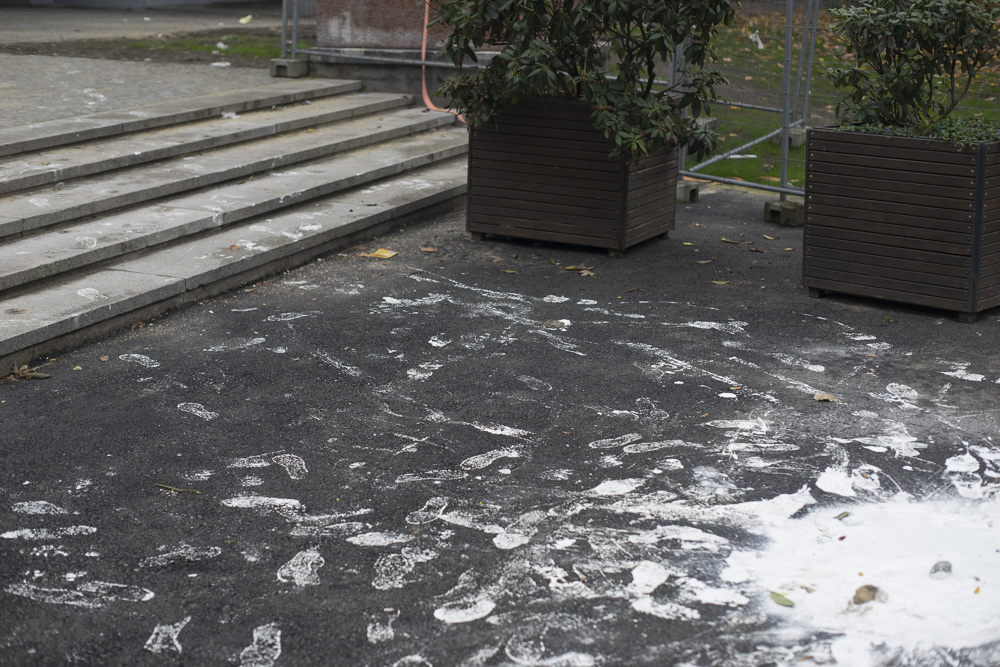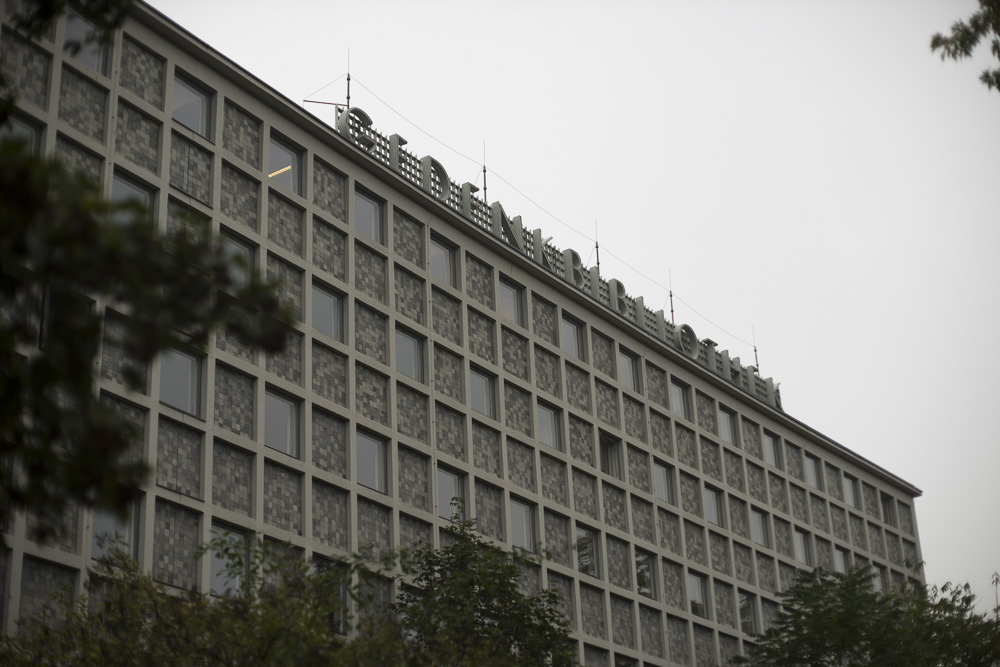City of memory, memory as a commons.
Like in many other areas of Berlin, the presence of “memory” in Mehringplatz is amplified by its absence in the physical space. Everything was bombed, everything has been rebuilt.
That is the narrative of the whole city, the epic of the struggles of an urban area in the attempt to overcome a century of destruction and divisions, but also an exploited memory, many memories and aesthetics offered to the city marketing as a profitable tool, employed to attract tourism and investors.
My attempt to find commons in the memory of Mehringplatz starts with the Viktoria statue, the very axis of the rounded square. It was present also prior to the war, at the center of Belle-Alliance Platz, and was one of the few remaining original elements spared by the bombs.
Today Viktoria represents the historical importance of the rounded square, the former gate to the city, however also embodying a certain level of disorientation.
Four other statues from the Belle-alliance platz -today part of the Denkmalschutz- are on my path to the Gedenkbibliothek, a library left as a present to West Berlin by the Americans, some are full of graffiti, while one is wrapped up in plastic for protection.
The library offers a program about the history of protests, and books and video-material on the topic are currently on display on the ground floor.
Eventually I end up visiting an abandoned parking lot on two levels, once belonging to the public housing units. Layers of moss and mushroom are growing on the asphalt, a rare example of an unemployed urban area in a highly central spot, one of the few leftovers of an era of vacancy that has labeled the recent history of the city, most likely soon to be demolished.
Memory could be seen as a commons, but its overexposure is often linked to mishandling, reinterpretation and exploitation of its contents, therefore it is fairly easy to commodify memory.
In a way, even the rigid structure of the Denkmalschutz does not allow individuals to “access” memory, in favour of the preservation of a state representation. If the nature of commons is their accessibility, I doubt that anything that I came across along my walk would fit the term.
The history of protests could perhaps be considered as such, but in opposition to the neighbourhood of Kottbusser Tor, Mehringplatz is still seemingly unaffected by uprising and revolt.
If, when and how the rich history of protest of Berlin will touch Mehringplatz still remains unclear.
